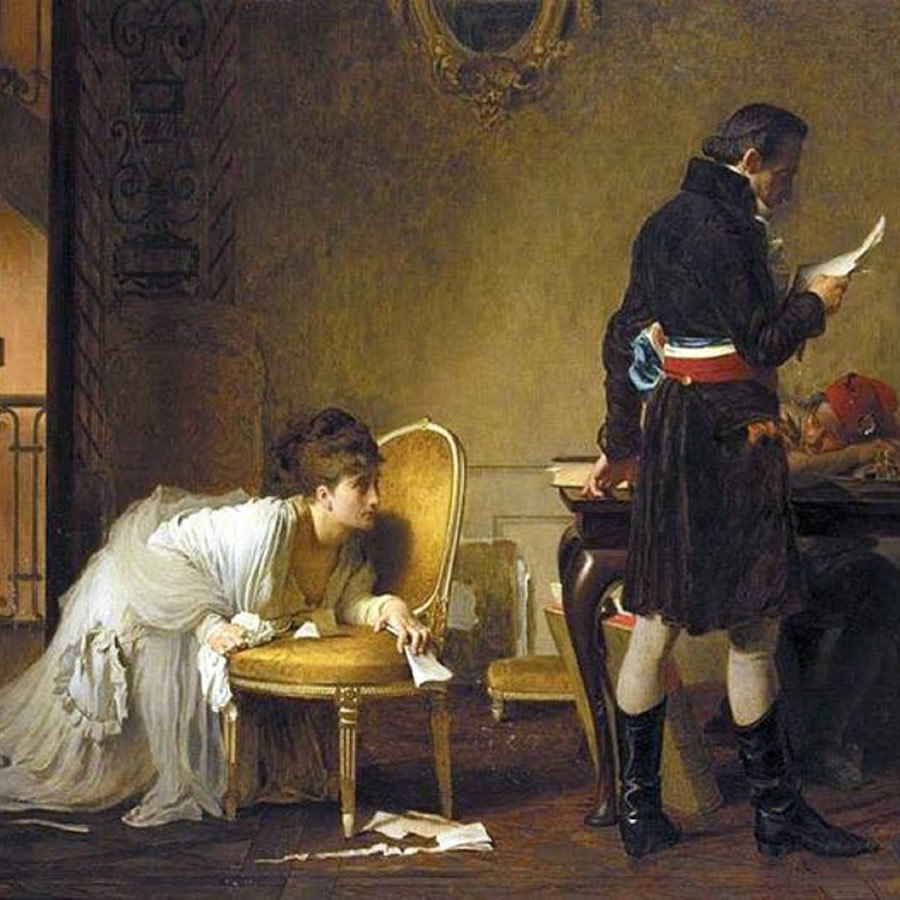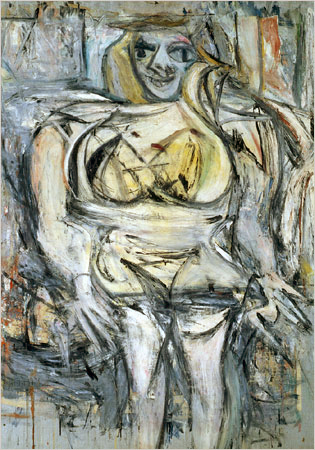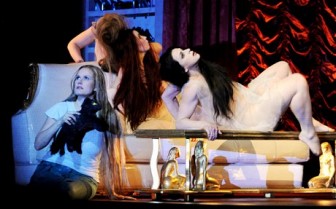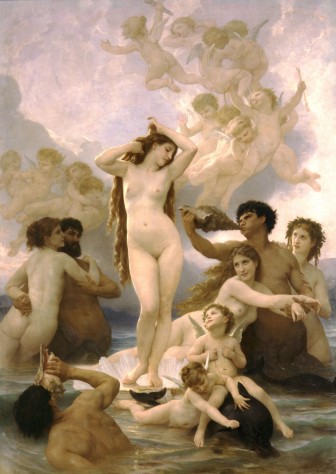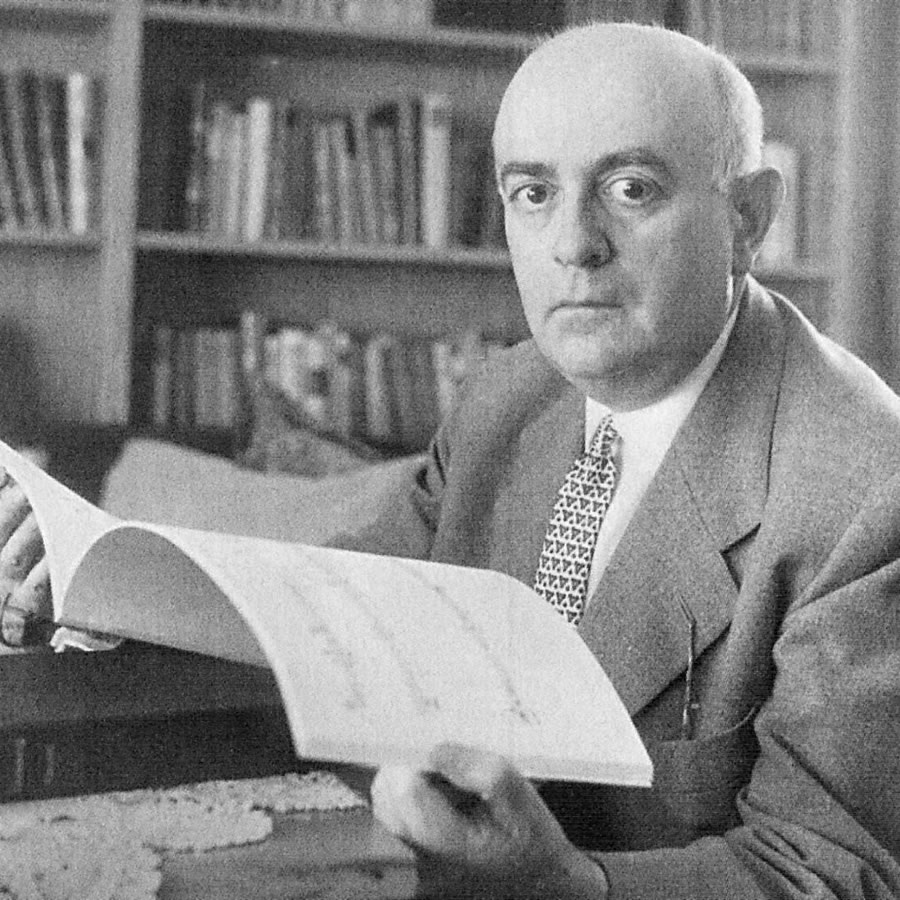Nothing Is a Matter of Course
Reports on the life and mission of orchestras and other institutions of classical music in our time make for vexed, sometimes dispiriting, reading. If you attend to them, as I have of late, you are likely to come across ledes like the following:
Orchestras Feeding America is a project that has seen over 250 orchestras from across the country collect nearly 450,000 pounds of food. The efforts of these orchestras have helped spread the word about how and why orchestras are so necessary to their communities, beyond providing amazing music.
Another press release from early this year reports on an orchestra that has received a grant in “recognition” of its “innovation and dedication to increasing its relevance to the community.” The increase in relevance specifically refers to a partnering of Music in the Mountains (an orchestra) with the Sierra Streams Institute to work with young people in order to compose “a piece of music that responds to their experience” of learning about the plight of wild salmon. Elsewhere, one hears calls for orchestras to “reinvent” themselves in the face of “diminished legitimacy and relevance in a world that has changed more in the last 30 years than at any time in the last 5,000.” We must turn “the whole edifice on its head,” by “redistribut[ing] musicians’ activity from the central concert hall to the communities where people live.” This will “democratiz[e] the art form and tak[e] it away from its elitist roots.”
Jesse Rosen, the President of the League of American Orchestras, comments on these innovations as a turning from a “self-referential, inward-facing assertion of excellence” as the mission of orchestras toward “statements of value and impact for people in orchestras’ communities.” In the League’s magazine, Symphony, Polly Kahn gives us a fuller sense of how this recalibration of mission finds concrete expression. She writes that increasing numbers of American orchestras
have transcended the traditional role of orchestras in communal life. These institutions, of course, stay true to their core purpose of sharing a great body of musical literature. But they are driven simultaneously by a growing sense of connectivity and responsibility to community, along with a desire to engage actively with an ever-more-diverse populace.
This engagement includes the deployment of musicians to hospitals and other places of care for music therapy; the mingling of the professional with the late-in-life amateur; drum circles as part of correctional programs for youth; and programs to commemorate wounds in the American political fabric, to console communities in the wake of natural disasters, and to bring about social change. Of this last role, Kahn opines,
it’s perhaps too easy to think of orchestras as solely inhabiting the world of Mozart, Beethoven, Strauss, and Stravinsky. But just as these artists responded to and challenged the cultural and political assumptions of their times, orchestral music today increasingly crosses musical genres and addresses significant social issues of our time.
Elsewhere, two scholars of music education (Carlos R. Abril and Brent M. Gault) offer advocacy strategies for the establishment or defense of music programs in schools, recommending that interested parties “highlight the transferability of skills” gained from training in music to “extramusical” contexts. Most of us are familiar with the old claims that training in the performance of musical instruments may enhance a child’s math abilities. These authors indicate other transferable skills, ranging from the “promotion of cultural understanding,” listening skills, and physical coordination, to language literacy, “sensitivity to unique individuals,” and the cultivation of creativity.
To list these revisionist accounts of orchestras’ missions and strategies for gaining a foothold in communities and schools in this manner is, I think, to invite cynicism. We hear that orchestras are amazing as they solicit food donations for the hungry, and wonder whether there are not less amazing but more efficient means of accomplishing that goal that, on balance, render musicians superfluous to the enterprise. Is it not the case that anything orchestras do “beyond producing amazing music” is an extrinsic rather than intrinsic, “core,” or essential activity? By definition no quantity of extrinsic activity, no matter how much we admire it, could tell us much of anything about the worth of the intrinsic one. We are left unsure how orchestras could be “necessary to their communities” if it is not in virtue of the main thing they do, and if “providing amazing music” is not the one thing necessary to an orchestra, then we wonder if what we call an orchestra might in fact be something else. So also, on hearing of grant dollars for an orchestra to help young composers tied to a very specific ecological project, we wonder whether the cultivation of the art of composition and the public interest in efficiently saving the salmon are not both vitiated in one fell swoop.
We sense indeed the rightness of Rosen’s, Kahn’s, and others’ observations, which imply that just as music would not be performed if there were no one to hear it, so should the communal work of an orchestra be ordered in a meaningful way to the life of the community that properly constitutes its audience. But these authors worry, as do we, when we hear musical “excellence” replaced by communal engagement, as if these were necessarily opposed missions. If that were the case, then there is something wrong either with the canons of musicianship or with the communities they are meant to serve. It does not lay this anxiety to rest to hear the president of a conservatory proposing orchestras should hire performers based on “virtuosity, of course” but also on “a whole magical package” of other skills, such as “entrepreneurship,” that might be offered to “an institution and its community.” In an orchestra’s effort to serve “as an agent of social change,” to quote Kahn again, will it also screen musicians for not just virtuosity but a commitment to the hour’s particular sense of what in society must be changed? If so, the perceived social function of music will inevitably come to determine what kind of music orchestras perform: only those with a political valence supposed to bring “change” to an “evolving” society will be played. The canons of great music will not disappear, but will simply be reconfigured to exclude whatever the imaginations of conductors cannot harness for a specific didactic or political movement.
A similar ambivalence haunts the strategy of selling schools on the “transferability” of skills first gained in musical education. If learning the violin helps one’s skills in mathematics – to return to an example with which, as we shall see, I am finally sympathetic – might we not also say, “Very true, but what also helps with a child’s math skills – even more so and more directly – is the study and practice of mathematics.” That objection admits no answer, while the notion that “sensitivity to unique individuals” is a skill acquired through music would seem to rely on a cloudy understanding of the word “skill” and a stereotyped one about both the lives of composers and musicians and the relationship of their lives to their art form.
As I have admitted, this style of listing invites cynicism, but so do, it must be said, many of the formulae used to express these accounts of the new mission and strategy for orchestras in an age supposedly characterized by “democracy,” “diversity,” and demands for “[r]elevancy and legitimacy.” The authors I cite face a daunting task in which they acquit themselves honorably: to insist upon the essential function of orchestras while casting their work in a manner that will draw needed grant dollars from philanthropic organizations unhappily settled on seeing their generosity validated by quantifiable fruits. In most cases, they do not fail to underscore or at least mention, in Kahn’s words again, that “the creation and presentation of music is, of course, the core of what orchestras are.” That phrase, “of course,” appears elsewhere in Kahn’s article and in others I have cited. It means, “goes without saying,” “a matter of course,” something that can be taken for granted by everyone.
But, and here is why such words can be dispiriting, the whole occasion of these apologetics in our time is that the intrinsic goodness of orchestras is not a matter of course. If it is something that usually passes unexamined, it is not something that carries much evidential power in our day; it is not something simply understood, but rather an assurance that crumbles in our fingers as soon as we handle it. I envy no one the task of having to articulate to the satisfaction of a granting institution why the “core” or essence of an orchestra is something worthy of its dollars. Far easier would it be to appeal in passing to residual sentiment about the “joy,” “vitality,” and “health” wrought by orchestral music, or to make half-literal, half-metaphorical appeals to music’s power to involve “the brain, body, and heart,” as one hurries on to enumerate the various assessable goals that will be realized beyond them: the violent will be pacified, the sick consoled, the salmon saved, the hungry fed, the backward reformed, the children sensitized, the elite diversified, and the stodgy made relevant. We simply have more words to describe such things and, more to the point, their goodness really does go without saying – because who among us does not value “change” or “relevance,” those empty words into which anyone can pour his dreams? Furthermore, we do not even need to say them; all we have to do is count them.
My concern this afternoon is not to deprecate these or other strategic efforts to preserve the life of orchestras in our straitened times. I have benefited from reading about them. Rather, I would like to consider the climate of opinion that has made such strategies seem necessary in the first place. Thanks to developments that have been underway not for years but centuries, persons in our time find it impossible to credit the idea of intrinsic goods. Things may be good for something, this we readily see, but we become at best uncomfortable and at worst incredulous that anything should be good in itself. If this is correct, then orchestras are in a dire condition indeed. We cannot appreciate those things that are most properly good simply because they are good in themselves. Faced with this often evasive denial of the goodness of things, we scramble to achieve the impossible: to establish what was formerly held as an intrinsic good exclusively by appealing to effects extrinsic to it. Lacking a qualitative hierarchy of goods, we multiply quantities of useful outcomes. In such an effort, we may generate many words, words that flatter our sentiments, but words that will not bear reasoned examination and so invite our cynicism.
I wish to explore the origins and reasons behind this lamentable modern incredulity and to help us understand the traditional alternative to it, which insists that those things are greatest and most worthy of our support – loving, intellectual, and financial – that are good in themselves and good in their effects. My first task is a general one then: to explain what it means for something to be good, so that goodness might cease to give us such stuttering trouble and embarrass us into hasty appeals to things outside it.
My second task will be to consider the particular goodness of orchestral music. As it happens, music has historically been thought to be one of those intrinsic goods known as the liberal arts that does indeed transform its listeners. On more than one classical account, it liberates the mind – but to what end? To effect political or social change? Sort of. For, according to the tradition on which I shall draw, music transforms the soul and liberates the mind so as to make it capable of recognizing and adoring what is most truly good in itself. If ours is an age that cannot recognize things as good in themselves, then the most radical social change in which advocates of music can engage will to be just this: to help others to see, to desire, to seek, to become adequate to, and to rest in that which is simply good. Music provides us one powerful instance in which good effects, fruits as they are called in the tradition, can be realized only because they are what I shall call a further diffusion of what is already a good sufficient unto itself.
The Three Kinds of Goodness
Let me begin by recalling the classical account of goodness, with which many of you will be familiar. According to the ancients, we generally recognize three basic kinds of goods in the following order: the pleasant, the useful, and, finally, that which is good in itself.1 The lowest and most common species of good is the pleasant; whatever gives the mind or body a pleasing sensation, insofar as it pleases, must be good. No one asks, “Why would you want to feel pleasure?” because pleasure in itself provides its own validation. We simply enjoy the taste of good food and drink, the feeling of exertion in sport and the caress of another. For all that it sounds as if the pleasant were ultimate, however, we see that pleasure is neither the only type of good nor even a sufficient denomination of goodness to allow us to understand the various competing goods among which even someone given over to a life of pleasures would have to choose.
I said a moment ago that pleasure is low and common, and for several reasons. First, and perhaps least compelling in our day, for reasons to which I shall return, pleasure is thought a low good because it can be had in common with all persons and with other animals. Aristotle complains that the life of pleasure is “completely slavish,” belonging more properly to “fatted cattle” than to free men.2 Second, we treat pleasure as “for the sake of activity and not conversely” in at least two respects.3 On the one hand, some pleasures are had only so that we can resume some activity in which we are primarily engaged; we may take, for instance, a cold drink, before returning to our labors on a hot day. On the other, those pleasures apparently enjoyed for their own sake we do not hesitate to set aside for the sake of other activities which we find to be either presently more necessary or absolutely more important. If that were not the case, our age would know only permanent weekends and would know – happily – far less about the abysmal humor regarding Mondays, when we wrench ourselves from rest back into the grind of necessity. Third, we can recognize that some things that genuinely give us pleasure, and therefore are good in that respect, are bad in another; pleasure therefore must be under- or even uninformative about the goodness of the thing that pleases. We do not purposefully drink cyanide, for instance, just because it happens to be laced with sugar and lemon, as do we forbid ourselves many other pleasant goods because they come as mere effects of things we positively identify as evils. In general, we often easily choose between two things equally pleasant based upon a perception of some other differentia of goodness.
This last point leads us to a vista where a higher form of goodness emerges. For, if pleasure is under-informative about the thing we denote as good insofar as it pleases, then it is probably the case that there is a kind of good beyond pleasure. The category of the useful comprises all those goods whose chief attribute is their pointing beyond themselves. They are not good in themselves, or not sufficiently, but are primarily desired for the sake of something else. We can recognize a purely useful good by the fact that we would not pursue it were some further good removed from view. It is hard for us, for example, to imagine anyone performing the tasks of a certified public accountant were it not that some reward, or the avoidance of some punishment, lies at the end of them. Thus, useful goods lack some of the self-evidence of the pleasant. We need to know what it is good for, before we recognize a useful good, whereas pleasures are so self-evident but incomplete in their goodness as to leave seeming inadequate our language and reason alike. We find the question, “Why pleasure?” absurd, and when we try to answer it we usually fail. “I guess you had to be there,” we conclude, throwing up our hands in frustration.
The useful, on the other hand, seems especially communicable. To demonstrate something is a useful good, we have only to propose a purpose beyond it and show how the given thing will help us attain it; this is an easily recognized and an easily explained criterion. A useful good is a means to something, and as a means it may seem to lack in goodness in itself but it is also easier to account for its character. Nearly every occupation in our day, from investment banking to the tying of balloon animals while wearing a clown costume, can be easily justified along these lines. “Why would you do something so unpleasant and humiliating?” someone asks. “It’s a living,” we reply. We have to make a living – though for what reason, I shall contend, we have trouble discerning, but nevertheless. Therefore, whatever is useful in making it is good.
If the useful always stands in reference to some other good beyond itself, it must be pointing to something or it would be neither useful nor good. As Thomas Aquinas observes, not all goods can be useful, because that would involve us in an infinite regress wherein every useful good was in fact useless. There would be no final term for which and to which all other goods are subservient.4 I shall return to this claim further on, but for the moment it will serve to indicate a third kind of good. If we can decide between different kinds of pleasant goods, because they have an element – let us call it X – that makes some of them more desirable always, some of them desirable some of the time, and others undesirable despite the pleasure they afford – we may be tempted to identify X by saying that some pleasant goods are more useful than others. But, if we then say that one pleasant good is more useful than another only for the sake of some further pleasure we are begging the question. There must be some kind of good that is comprehended by neither pleasure nor utility, but, to the contrary, stands essentially above them and comprehends them.
Whatever such a good is, it will not be as self-evident as pleasure, because we must look beyond pleasure to perceive it, and we may even find pleasure obscures it to us. So also, we may more readily understand useful goods, but if we can recognize them, we must also sense, however vaguely, some good in itself that gives them their useful and good quality in the first place. Traditionally this sort of good is referred to as a bonus honestum, a good deemed honorable or moral in itself.5 But how can this be? we ask. What is a good in itself good for? The only possible answer has to be that an honest good has the character of a term or end: it is the place where a chain of for-sake-of-whiches finds its end. Anticipating our resistance to this notion, Aristotle proposes that something is a good in itself when, in being done for or valued for itself, it is actually valued for the sake of beauty.6
The sufficiently good in itself is beautiful. Just as pleas-ant goods seem at first self-evident and self-justifying, so that which is an unqualified good in itself elicits a kind of immediacy once it has been recognized for itself. On Aristotle’s account, the idea of the beautiful helps us to understand this, because nothing stands between us and our encounter with the beautiful (it is immediate in that sense), but we may not instantaneously perceive something as beautiful; we can be helped to do so by different means of instruction, and once we do it admits of rational explanation.7 Above, we considered accountancy as a useful good; we see examples of honest goods in such things as the courage of the soldier, where there would seem to be something intrinsically beautiful in the power to act in the face of real danger, when it is possible, however unlikely, that such danger can be overcome. That courage, so good in itself, by its own virtue may bear fruit in victory in war, the glory of reputation, or the immortality of remembrance. One would desire to possess courage even if one were not a soldier. So, also, in the case of the professional natural scientist, though his applications for grants may come to an end upon his retirement, he may still continue to study his subject because of the beauty perceived in the acquisition of knowledge. The study seems good in itself and in the new knowledge it breeds.
An honest or intrinsic good is something that is desired for its own sake – for the beauty of it, Aristotle tells us. From this I draw three observations. First, something may be desired primarily for itself, and yet still admit of other goods beyond itself. Thus, an honest good need not be an absolute good, but only absolute in some particular order of reality. The French philosopher Jacques Maritain coined the term “infravalent goods” to define those things that are primarily desired for themselves in one particular order, but which ultimately stand in subordinate relation to a good beyond themselves, all culminating in one absolute and transcendent good that orders all the rest.8 Second, to be an intrinsic good entails above all being the term – the final point – of a sequence. But, third, that which is sufficiently good in itself is often recognized because of a quality often described as gratuitousness, fruitfulness, or self-diffusiveness. That alone which is sufficient unto itself is also ecstatic or self-transcending. Here lies the explanation for why the good in its goodness is beautiful.
Taken together, these observations suggest what it means to talk about goodness per se, and of its specifications as pleasant, useful, or honest. When we talk about goods, we are always talking about ends and the different ways things and actions can stand in relation to ends.9 Though things and actions can be good in different ways, in every case goodness is defined in terms of final purpose: the end of pleasure, the instrumental end that leads immediately beyond itself to another end, or the end that brings to term a sequence, in a certain order or absolutely. Whenever we speak of goods, we have to have in place a conception of purpose or finality – what the ancients called the idea of final causality, where the why or for-sake-of-which of a given thing or action is understood. This holds not just for useful goods, which are good only insofar as they have a purpose beyond themselves, but also, as we have seen, for honest goods which are their own ends. An intrinsic good is not something that is useless or purposeless in the sense of being without-end, but something that is undertaken for itself and to which other things or actions may be ordered as a final cause – a final why. They are their own fruit (frui), and they are fruitful, so that what they give birth to seems to draw us at once beyond and back to their goodness.
Modernity’s Stripping of Goodness from Being
Perhaps already it becomes clear why our age has trouble with goodness. It has been a truism since the seventeenth century that rational or scientific knowledge can tell us nothing about final causes. To wit, in the eyes of our contemporaries, final causality is not even an object of knowledge. As Etienne Gilson wrote, speaking of this revolution, the modern thinker says, “Scientists never ask themselves why things happen, but [only] how they happen.”10 This constitutes a radical shrinking of the sphere of rational knowledge.
Its early advocates converged in this project often with radically opposed intentions. The early modern philosopher and naturalist René Descartes, for instance, would assert that, because our natures are “very weak and limited,” while God is “immense, incomprehensible, and infinite,” our knowledge will always be inadequate to God’s intentions. “For this reason alone,” he writes, “the entire class of causes which people customarily derive from a thing’s ‘end,’ I judge to be utterly useless in physics. It is not without rashness that I think myself capable of inquiring into the ends of God.”11
As I understand Descartes’ larger scientific project, the following ambitions led him to this claim. In his Meditations he sought primarily to establish the existence of an all-knowing and good God in order to vouchsafe the intelligibility of the world. Such a god would give the extra-mental world stability and our knowledge of it reliability. But, he sought also to divide absolutely theology, the knowledge of God made possible by revealed religion, from the knowledge of nature made possible primarily by experimental observation and mathematical analysis. In The World and elsewhere, he sought to provide an account of the natural world and its functioning based entirely on its internal mechanisms. As Blaise Pascal would write, God served as a “fillip” to put the world in being and ensure its knowability; God also must concur in the universe’s continued existence; but, for Descartes, there is no role for God interior to the universe – with one possible exception.12 Closed though it is on three sides, as it were, the Cartesian universe would seem to be open-ended. Its internal mechanisms would seem to reach out to God through their purposiveness.
By shrouding God’s purposes is infinite mystery – and not just his ultimate purposes, but any and all purposes, including even those that seem observable – Descartes is able entirely to enclose his universe. One needs only a knowledge of its mechanisms to understand fully all of its contents. In effect, Descartes excludes from the purview of human reason and physics anything but the knowledge of mechanisms understood as instrumental goods. Scientific research may thereby continue to ask how things operate without impinging on the existence, goodness, or purpose of God. In his effort to preserve these things as transcendent realities, Descartes in fact reduced them to postulates outside of knowledge per se. The first two may help establish the possibility of the knowledge of physics, but the third is not part of that knowledge, and in fact all rational knowledge (i.e. knowledge outside the innate ideas of the necessarily good God’s existence, our existence, and the world in which we may reliably believe) ultimately is reduced to the realm of physics.
Writing during the same period of early experimental-scientific enthusiasm, Thomas Hobbes would also exclude the knowledge of ends from physics, but not because the will of God was for us obscured within the abyss of its infinite mystery. Rather, to speak of ends was an act of absurdity; it was tantamount to misunderstanding the nature of reality as such. “When a body is once in motion,” Hobbes writes early in Leviathan, “it moveth (unless something else hinder it) eternally.”13 The “end” of a body’s movement comes not when it reaches the goal of some intension, the final cause to which it was ordered, but only when some other body reduces its motion to zero by an act of interference. Hobbes was a materialist; he posited that only bodies were real entities, and that therefore reality as such was reducible to material things and their motions. There is no place inside his universe for intentions, purposes, or final causes; and, in contrast to Descartes, there is nothing outside his universe.
What reason could know was only that immanent mode of causality we would identify with instrumental goods. Human beings can only conceive of finite, that is to say material, things, and they can understand them in two possible ways: they can see something has been effected, and so speculate as to what brought it into effect, or they can imagine some material body and speculate as to what effects it might be put.14
We might interject at this point that it is absurd to speak of a world composed exclusively of instrumental goods, because all such goods derive their identity from being good for something that is the end of a train or sequence. Descartes postpones indefinitely this conundrum by putting finality beyond our knowledge. Hobbes precludes it by setting goodness outside knowledge altogether. In Leviathan’s subsequent exploration of human nature, he undertakes to render goodness absolutely relative by making it entirely dependent on an individual body’s will or appetite. A good, he says, is “whatsoever is the object of any man’s appetite or desire.”15 To pronounce something a good tells us nothing of the thing itself, but only of the interior and hidden or exterior and visible movement of a body toward it.16 All the words we use to characterize various kinds of goods operate in this way: they describe not the thing referred to but our evaluation of that thing. So, the worth of a given human being is just so much as one might give for the use of his powers.17 Honor and dignity constitute merely private and public recognitions of this price we place on a person’s capacities. None of these qualities inhere in the person valued, honored, or praised.
Hobbes’ ambition in this reduction of goods to value, and values to the human will, is to inaugurate a new science of politics, and so he ultimately leads his reader to a theory of justice that does not require the identification of anything as in itself a good. Thus, justice, for Hobbes, comes merely to the honoring of contracts: it is strictly “commutative.” To be just is to follow an agreement to which one has previously consented.18 He dismisses as absurd the notion of distributive justice, wherein certain things are owed to a person, not in virtue of a contract, but simply in virtue of who he is in himself. All goods must therefore be instrumental, because a good is always either a means to get what we want, or the thing wanted, but there is no rational reason we should want one thing rather than another.19 Our wills are opaque to reason, in fact. They have no intelligible content. And so, again, we can ask how things come to pass, but to inquire into why is to misunderstand the nature of the human person, of knowledge, and of reality in all its monstrous and mechanical clutter.
In the vision of such modern thinkers, we are shown either a world stripped of intrinsic goodness for us or per se. As the philosopher Iredell Jenkins argued many years ago, Descartes, Hobbes, and others operate from the postulate of an impoverished reality, which he defines as “the settled conviction that nature is in fact much simpler and barer than it appears to us in experience.”20 Quality vanishes; only quantity remains. Whatever cannot be counted cannot be an object of knowledge – and is at best a private appetite and at worst an absurdity. This is the world into which we have been born. As Hobbes reminds us, human beings are indeed full of appetites; we find many things good, in our experience. But we deny that any such things could be rationally defended as good in themselves and for their own sakes.
With Descartes and Hobbes, we tend to look upon the world as a self-enclosed system of mechanisms that we understand as a series of means or instrumental goods, as things we may value but which are stripped of any intrinsic worth. How do we understand the world and our appetites in such a vision? Critics of the modern vision have reached a general consensus on three basic qualities. Firstly, we tend to strip things in reality down to their quantifiable elements. What can be enumerated, subjected to mathematical analysis, counts as knowledge; what does not does not; the realm of mathematical values somehow stands above and free from the dubious valuations of taste and appetite. Thomas Aquinas, centuries ago, explains why. All number entails an abstraction from being and existence, but only being and existence are goods. Therefore “mathematicals,” as he calls them, are neither good nor evil.21 As Jenkins notes, the modern mind tends to understand reality in terms of quantity. Rather than treating number as an abstraction from what is real, we take it as the final determinant of the real. There is no place for goodness in a mathematical universe.
What becomes of our desires in such a world? This question is answered by the second and third qualities, which will at first seem incompatible. We see, secondly, that the modern mind, having lost the sense of intrinsic goods, but needing its pursuit of instrumental goods to be directed somewhere, would seem to have arrived at hedonism. We would seem to pronounce pleasure the highest good. Pleasure, as we considered earlier, has at least the quality of self-evidence about it, and, in our time, it would seem we recognize no higher authority, so that, once a thing is pronounced as desirable because it pleases us to desire it, no rational appeal can be made against this desire. As Gilson and E.F. Schumacher recognized long ago, this leads to an absolutization of desire, in which everything we want becomes an unquestionable good. It becomes in fact a little god, one of myriad idols at whose altar we worship so long as we like, and whose deity deflects the unbelieving with inane indignations along the lines of, “What gives you the right to tell me what I should like?”22
This second quality does not stand alone, but has as its obverse a third: if our desires are absolute, nonetheless their objects are not and, further, the desires themselves are understood as indefeasible by the reason because they are simply outside the reason altogether. This is what most persons mean in our day when they say that goodness is “subjective.” They do not mean that it is a reality that inheres in the intellect rather than in things themselves, but that it does not even inhere in the intellect, because all real knowledge is of quantity. They mean what Hobbes means, that our desires tell us nothing except that we desire. Our understanding of what is good is therefore locked away entirely in the opacity and the privacy of the appetite and can have no public status as something known, shared, and therefore potentially binding on the minds of others. We waste our time trying to understand what we want or what we should want. The only use of reason is to figure out how to get what we already find ourselves wanting or to ensure ourselves against future desires. We feel acutely why Hobbes reduced politics and justice to a relative contract. He saw with clarity that knowledge pertaining to means is clear and communicable, while reason knows nothing about ends, and all talk of them ends in absurdity.23
Taking these two qualities together, we see that goodness in our day is something absolutely worthless and jealously guarded. Our desires are divine and unquestionable for us, and yet empty and insignificant for the world at large. Only instrumental goods slip between this Scylla and Charybdis. They are eminently knowable as means, formulated thus, “Y is a means to attaining X. If you desire X, then you will also desire Y.” We may not know if anyone desires, or should desire, X – indeed, we lack the intellectual equipment even to ask – but we do know that Y is instrumentally ordered to it.
The Finality of Finality
My argument thus far has avoided appeal to a more conventional way of understanding the modern stripping of goodness from reality that ensued from the denial of final causality as an object of knowledge, but I would like to turn to it briefly as a means of arriving at a final understanding of goodness, before I come to consider the particular good of music. Since Aristotle, four types of causes of things have traditionally been acknowledged.
First, the material cause, which comprehends the material substrate of which a given individual thing is made. The material cause of a podium is usually wood, for instance. Second, the formal cause means the idea giving specific form to otherwise formless matter. The idea of podium in the manufacturer’s mind is the formal cause of the podium. Third, there is the efficient cause. The act of the manufacturer in joining form to matter effects, or brings into actual being, the podium itself. And, fourth, there is the final cause – again, the reason for something’s being brought into being, its why or purpose. In Gilson’s formula, the first three causes can be objects of rational knowledge, because they speak of how something comes into being. The final cause – as a why – cannot.
True in a way though it is, such a formulation conceals something from us. All inquiry into causality, all rational inquiry, though it may appear to restrict itself to material, formal, or efficient causes, is ultimately ordered as an inquiry into finality. To put a provocative point on it, all inquiry into truth is in fact a questing after goodness. This includes the inquiry of the physicist’s laboratory as much as that of the engineer, philosopher, or theologian. We would not consider a manufacturer of glass hammers, to use a classic example, to know much about hammers. In post-Darwinian biology, we do not claim to understand a genetic modification until we understand why – for what end – it is selected. As the evolutionary psychologist Stephen Pinker has observed, in his field of inquiry, the criterion of new knowledge is whether a given experiment reveals what he calls a “Darwinian payoff.” Claims about the means of a genetic selection do not suffice; one must be able to show a causal link to some end; every phenomenon must be shown as serving an evolutionary purpose, or the claim does not meet the bar of knowledge. All rational inquiry is into the why of things – into what makes them good. The other three types of causality might best be understood as sub-species of final causality.
Thomas Aquinas reveals this identity of knowledge with value, or rather, truth with goodness, in his discussion of the goodness of things. He says everything may have a threefold perfection or goodness,
First, insofar as it is constituted in its existence. Second, insofar as the accidents necessary for its perfect operation are added to it. Third, the perfection the thing has insofar as it reaches something else as its end.24
When we call something good, we may be saying any of these three things, and here I reverse Aquinas’s order: it has reached the end beyond itself toward which it, by nature, moves; or that it has attained all the incidental qualities necessary to its acting, or moving, fully and according to its nature; or that a thing has been brought into being, that it has become what it is only as the final cause of some anterior intention. In all three cases the good is understood as a kind of end.
What we may find most remarkable is the first sort of goodness he mentions. How can the claim that something is good insofar as it exists be anything more than a postulate or a leap of faith that an incomprehensible God has some secret purpose in mind of all things? That things, of no value in themselves, may yet be harnessed for some end obscure to us? We have the answer already sealed in the concrete example of the glass hammer given above. All forms of causality – the matter of something, its form, the agent that brings it into being – have the bringing into being of something as their own final cause. A glass hammer may be a lousy hammer, given the final cause of hammers to drive iron nails into wood, but it is nevertheless the good sought, the final cause, that leads an agent to dispose the glass into the shape of a hammer. The brute fact of an existent thing is itself always the end of an operation; it is not a reality onto which we may project a value, but an intelligible good in which being and goodness are identical.
We only know as much about the cause of anything as we know the ways – and I underscore the plural here – in which it is good. Goodness is the principle that makes reality intelligible. No goodness, no truth. No truth, no knowledge. Contrary to Hobbes, then, it is absurd to say we could speak intelligently of reality without attending to causes. And, contrary to Descartes, to restrict our knowledge of things to mathematicals is in fact to restrict our knowledge to a world of shadows and abstractions and to say very little about the world in which we actually live. We may have trouble acknowledging intrinsic goods, because we have an at best shaky confidence in our capacity to know the truth about things. But, insofar as we claim to know anything, we should to that same extent be able to affirm the goodness of things and to deliberate about the relative magnitude of the various intrinsic goods that populate our world.
I have asserted that Aquinas solves this modern trouble with goodness for us, and so I shall let him answer two weighty objections to his claim. One might say, with Hobbes, that we know things are in motion, not why they move. It is a law among us now that a body in motion tends to stay in motion. Aquinas would reply that, first, “body” is a genus, an abstraction from individual existing things and not a thing in itself. It may well be that bodies in principle move without end, just as numbers may be counted without being good. Such is the character of abstractions – that they are abstracted specifically from the being that exists in reality as a point within a series of causal relations, of finalities. All actually existing things do move, this we grant, and they move for a purpose, because if there were no end at which to aim, or if the aim were infinitely distant, nothing would begin to move in the first place.25 The specific difference by which we tell one thing from another is also the determinant of the ends toward which different things – bodies or otherwise – move.
To all this, one may reply, what about chance? Cannot all things move endlessly, because set in motion by some fundamental fluke in reality? Aquinas replies, we can only understand chance relative to the normative goodness of nature. We see that a given nature normally pursues a specific end; we know natures primarily by the end that they pursue “always or for the most part.” If all things moved according to chance, then we could say nothing at all about things, because all things would be absolutely different, unrepeatable in their individuality. But, if all things were unique, we could not say that they were caused by chance. We would have no basis for the assertion. We perceive chance only in its departure from a given nature’s norm characterized by its failure to pursue that nature’s end. If we admit as a hypothesis that chance rather than purpose governs all things, we must also admit that we could never know anything about it. But the problem that confronts us is not a world professedly agnostic about all things as such, but only about the goodness of things. I have tried to show that such a world is abysmal, because it is incoherent. It claims you can know the truth without even affirming the existence of goodness. I have countered that the truth of things is their goodness.
Music as Honest Good and Liberal Art
We are now in a position to draw these reflections on goodness per se into the contemporary world of apologetics for classical music and the social value of orchestras. We are accustomed to thinking of music as a fine art, and the actual performance of music is indeed a fine art. The practicing musician produces something outside of his activity, the music itself, so it is by definition an art; and the product is not immediately put to some other use, so it is a fine rather than servile art. But let us distinguish the act of the musician from the understanding of music, whether it be the creative knowledge of the composer or the receptive understanding of the auditor. These have traditionally been understood as among the liberal arts. So, if we are to understand the good of music, we shall have to understand it not primarily in terms of the musician who performs it, but in terms of the minds that come to know it; that is, what makes music one of the liberal arts?
The liberal arts, the arts of the free, are those practices of the intellect that may be learned, are an activity complete in themselves, and do not primarily serve to produce something outside of their activity. They are free from external product, and that suffices to distinguish them from the servile arts. They are also free in a positive sense that we are now prepared to appreciate: they must be good in themselves. The practice of thought of a particular liberal art must be worthy of undertaking for its own sake. One feature of liberal education is, therefore, the training of mind and desire so that we will recognize and seek things that are intrinsically good, with the liberal arts themselves being chief among those goods. Philosophy, for instance, entails the pursuit of true ideas as good in themselves, but their pursuit is itself an orientation and way of life that is also intrinsically good.
One further characteristic of the liberal arts, first intimated in the philosophies of Pythagoras, Plato, and Aristotle, but systematically developed in the early medieval writings of St. Augustine, is that the practice of the liberal arts orders the mind and appetites not only to themselves but to an effect that naturally follow from their own goodness. Like all honest goods, the liberal arts bear fruit. Augustine claims that the ordering of the soul that the liberal arts enact leads not only to an knowing and loving rest in intrinsic goods, but to the soul’s journey through those goods up to the absolute and unqualified good in itself who is God.
This argument of Augustine’s often gets discussed in terms of the liberal art of mathematics. By engaging the intellect in the pursuit of “measure, number, and weight,”26 Augustine proposed, mathematics leads the mind to perceive the qualitatively distinct kinds of numbers out of which are constituted material bodies, abstract thoughts, creative acts, pleasures, memories, and rational judgments.27 This numerical hierarchy leads from bodily creatures to intellectual creatures and prepares the mind for the perception of the uncreated and unconditioned Good of all things. Mention of mathematics may lead us to a conclusion it did not lead Augustine: namely, that this would be a purely intellectual exercise at an abstract remove from reality and from the goodness for which I have been arguing. Rather, Augustine’s argument on this point appears in the De Musica, his study of music as a liberal art. In music, he suggests, we perceive that numbers subsist in form, in order, proportion, and harmony. Attention to music is attention to the manifestation of intellectual order in sensible being. It is perceived by the ear and experienced only through the cooperation of the bodily senses, the reason, and the memory. In this, it stands in contradistinction to, say, a work of sculpture, which might seem to be comprehended whole by the eye alone, and even to ravish the sight to the exclusion of the mind. Although music may sometimes threaten a similar ravishment, it manifests in an especially clear way the union of mind and sense, idea and being, more so than either pure mathematics or any plastic art form.
As is the case with nearly everything, music may first present itself as a pleasant good. But, in its drawing of the numbers that inform reality into a distinct form, it reveals itself as good in itself. This act of ordering number and idea into audible form, first, beguiles the mind and brings it to rest in the form of the musical work, but, second, it helps to order the mind, schooling it in the perception of the measurable heights and depths of reality. This fruitfulness of the good of music aids the mind in its ascent to a knowledge of the Good itself. Like every liberal art, it constitutes a practice good in itself and it initiates our minds into the contemplation of that final cause in light of which alone we can understand the meaning and destiny of ourselves and of all things.
If this classical and medieval account of music is correct, it actually answers many of the criteria implied in the apologetics for classical music and orchestras I reviewed at the outset, but bests them by restoring to its center the essential goodness of music – highlighting what has too often been only glossed over with a hasty “of course.” By considering music as a liberal rather than a fine art, we endorse the revised understanding of the mission of orchestras as centered less on virtuosity and more on engagement of the community in a practice of education and intellectual freedom that is good in itself and good in its effects. It emphasizes that classical music is a distinctive good in its capacity to unite the most abstract powers of the intellect and the experience of the senses into the contemplation of a whole ordered for beauty’s sake. It also emphasizes the “transferability” of the skills music cultivates, explaining perhaps why it is there should be an observable correlation between the understanding of classical music and the understanding of mathematics. One fruit of the intrinsic good of hearing and understanding music is its ordering of the mind to the perception of the full scope of being, to number, to form, and to the Good itself.
Finally, if the modern condition is as I have described it, our society is one that publicly recognizes only useful goods while it privately absolutizes pleasant ones. In such a society, one would expect to find a populace jealous of liberty regarding its own pleasures, while full of anxiety about maximizing utility so as to bring the “greatest good to the greatest number.” It is in concession to that anxiety that apologists for orchestras and classical music attempt to make the case for their usefulness as philanthropic entities and as agents of social change.
Let us conclude with a paradox on this point. In a society that knows only pleasant and useful goods, to insist upon the reality and self-sufficiency of intrinsic goods, to insist upon the absolute truth of such things and upon the necessity of recognizing and understanding them for the sake of human happiness – that strikes me as a profound act of social engagement. Nothing could be more counter-cultural, nothing more shocking, than for the orchestra in the concert hall to arrest the pursuit of mere pleasures and mere utility in our day by bring audiences into the dynamic stillness, the fulfilled rest, the pleasure beyond mere pleasure, and the fruit beyond mere utility, that occurs whenever we are in the presence of that which is genuinely, honestly, simply, good.
Endnotes
1 Aristotle, Nicomachean Ethics, 1156a.
2 Aristotle, Nicomachean Ethics, 10956.
3 Aquinas, Summa Contra Gentiles, 3.27.
4 Aquinas, Summa Contra Gentiles, 3.25.
5 Aquinas, Summa Theologica, I.5.6.
6 Aristotle, Nicomachean Ethics, 1168a.
7 Cf. Roger Scruton, Beauty (Oxford: Oxford University Press, 2009), 8.
8 Jacques Maritain, Collected Works of Jacques Maritain Vol. 11: Integral Humanism, Freedom in the Modern World, and A Letter on Independence (Trans. Otto Bird, et al. Notre Dame, IN: University of Notre Dame Press, 1996),246.
9 Aristotle, Nicomachean Ethics, 1094a; Cf. Aristole, Politics, 1252a, and Aquinas, Summa Contra Gentiles, 3.2.
10 Etienne Gilson, God and Philosophy Second Edition (New Haven: Yale University Press, 2002): 112.
11 René Descartes, Discourse on Method and Meditations on First Philosophy (Trans. Donald A. Cress. Indianapolis: Hackett Publishing), 82.
12 Blaise Pascal, Pensées (), §76-77.
13 Thomas Hobbes, Leviathan (Indianapolis: Hackett Publishing, 1994): I.ii.2.
14 Hobbes, Leviathan, I.iii.5 and 12.
15 Hobbes, Leviathan, I.vi.7.
16 Hobbes, Leviathan, I.vi.2.
17 Hobbes, Leviathan, I.x.16.
18 Hobbes, Leviathan, I.xv.14.
19 Hobbes, Leviathan, I.vi.53.
20 Iredell Jenkins, “The Postulate of an Impoverished Reality” (The Journal of Philosophy 39.20 (24 September 1942)), 535.
21 Aquinas, Summa Theologica, I.5.3.
22 See, E.F. Schumacher, A Guide for the Perplexed (New York: Harper & Row, 1977), 59.
23 See, Schumacher, 58.
24 Aquinas, Summa Theologica, I.6.3.
25 Aquinas, Summa Contra Gentiles, 3.2.
26 Robert J. O’Connell, S.J, Art and the Christian Intelligence in St. Augustine (Cambridge: Harvard University Press, 1978), 55.
27 Bonaventure, The Soul’s Journey into God (), 2.10.





